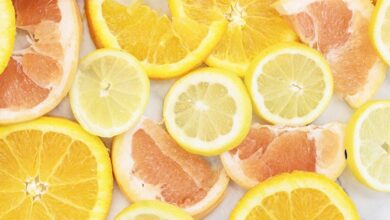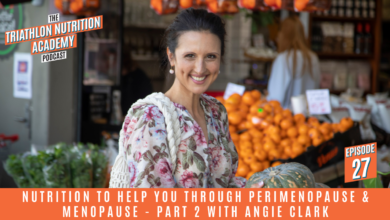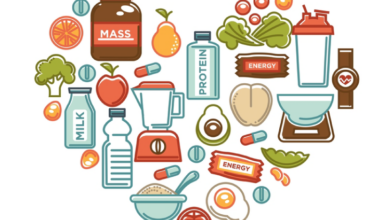
Are Superfoods Worth the Hype?
Are superfoods worth the hype? This question has become increasingly relevant as the popularity of these nutrient-packed foods has skyrocketed. While the term “superfood” often conjures images of exotic fruits and ancient grains promising miraculous health benefits, it’s important to delve into the science behind these claims.
This exploration will examine the origins of the “superfood” label, analyze the scientific evidence supporting their purported benefits, and discuss the practical considerations of incorporating them into a balanced diet.
From the vibrant hues of acai berries to the earthy flavors of chia seeds, superfoods have captured the attention of health-conscious individuals worldwide. But beyond the marketing buzz, are these foods truly superior to their everyday counterparts? This journey will investigate the nutritional value of superfoods, their potential impact on health, and the crucial role of critical thinking when evaluating their claims.
Scientific Evidence for Superfood Claims

The term “superfood” has become ubiquitous in the health and wellness industry, with claims that these foods possess extraordinary health benefits. However, it’s crucial to analyze the scientific evidence behind these claims to determine whether they are substantiated.
Analyzing Scientific Studies on Superfoods
Scientific studies provide the foundation for understanding the health effects of foods, including superfoods. Research methodologies employed in these studies vary, ranging from observational studies that examine correlations between dietary intake and health outcomes to randomized controlled trials that manipulate dietary interventions and assess their impact on specific health markers.
While the “superfood” label can be a bit overblown, there’s no denying that certain foods pack a nutritional punch. And when it comes to plant-based powerhouses, mushrooms and sweet potatoes definitely deserve a spot on the list. For a delicious and healthy meal, try these marinated mushroom sweet potato tacos , a flavorful way to get your daily dose of vitamins and minerals.
So, maybe “superfood” is just a marketing term, but when you’re eating something this tasty and good for you, who really cares?
- Observational studies, such as cohort studies and case-control studies, can identify associations between superfood consumption and reduced risk of chronic diseases. For example, studies have linked high intake of berries with a lower risk of heart disease and certain types of cancer.
Superfoods are often touted as miracle cures, but the truth is, a balanced diet is more important than relying on any one specific food. That being said, getting enough vitamin D is crucial for overall health, and while sunlight is the best source, it’s not always an option.
If you’re looking for ways to get vitamin D besides sun , there are plenty of supplements and foods that can help. Ultimately, the best approach to nutrition is a holistic one, focusing on a variety of nutrient-rich foods, rather than relying on superfoods alone.
- Randomized controlled trials (RCTs) are considered the gold standard for establishing causality. These studies randomly assign participants to receive either a superfood intervention or a control group, allowing researchers to isolate the effects of the superfood. For instance, RCTs have demonstrated that consuming flaxseed oil can lower cholesterol levels.
Comparing and Contrasting Evidence for Different Superfood Categories
Superfoods encompass a wide range of foods, each with its unique set of potential health benefits. Analyzing the scientific evidence for different categories of superfoods can reveal patterns and differences in the strength of support.
- Berries: Studies have consistently shown that berries, such as blueberries, strawberries, and raspberries, are rich in antioxidants, which may protect against oxidative stress and inflammation. These findings suggest that berries could play a role in reducing the risk of chronic diseases, including heart disease and cancer.
- Leafy Green Vegetables: Spinach, kale, and other leafy green vegetables are packed with vitamins, minerals, and antioxidants. Research suggests that these vegetables may promote heart health, improve cognitive function, and reduce the risk of certain cancers.
- Nuts and Seeds: Almonds, walnuts, chia seeds, and flaxseeds are excellent sources of healthy fats, fiber, and micronutrients. Studies have linked regular consumption of nuts and seeds to improved cardiovascular health, better blood sugar control, and reduced risk of certain chronic diseases.
Potential Limitations and Biases in Superfood Research
While scientific studies provide valuable insights into the potential health benefits of superfoods, it’s essential to acknowledge potential limitations and biases that can influence research findings.
I’m always skeptical about “superfoods” – are they really that much better than regular food? But I do believe in the power of a balanced diet, and that’s where salads come in. If you’re looking for ways to make your salads more satisfying and nutrient-packed, check out these 7 best salad strategies.
While I might not be convinced about superfoods, I do know that a delicious and well-planned salad can be a powerhouse of nutrition.
- Small Sample Sizes: Some studies on superfoods may have small sample sizes, limiting the generalizability of their findings to larger populations.
- Short Study Durations: Studies with short follow-up periods may not capture long-term health effects of superfoods.
- Funding Sources: Research funded by companies that produce or sell superfoods may be subject to bias, as they may have an interest in promoting positive findings.
Nutritional Value and Impact: Are Superfoods Worth The Hype
Superfoods are often lauded for their concentrated nutrient profiles, promising a range of health benefits. But how do these foods stack up against each other, and what are the potential implications for overall dietary intake and health outcomes?
Nutritional Profiles of Superfoods, Are superfoods worth the hype
To understand the nutritional value of superfoods, it’s helpful to compare their profiles. Here’s a table showcasing some popular examples:
| Superfood | Vitamins | Minerals | Other Nutrients |
|---|---|---|---|
| Blueberries | Vitamin C, Vitamin K, Manganese | Potassium, Fiber | Antioxidants (anthocyanins) |
| Kale | Vitamin A, Vitamin C, Vitamin K | Calcium, Potassium, Iron | Fiber, Antioxidants |
| Salmon | Vitamin D, Selenium | Potassium, Phosphorus | Omega-3 fatty acids, Protein |
| Avocado | Vitamin C, Vitamin K, Folate | Potassium, Fiber | Healthy fats (monounsaturated) |
| Dark Chocolate | Iron, Copper | Magnesium, Fiber | Antioxidants (flavanols) |
Specific Nutrients and Potential Health Benefits
Superfoods are rich in various nutrients, each with its own potential health benefits. For example:
- Antioxidants:Found in blueberries, kale, and dark chocolate, these compounds protect cells from damage caused by free radicals, potentially reducing the risk of chronic diseases like heart disease and cancer.
- Omega-3 fatty acids:Present in salmon, these essential fatty acids are crucial for brain function, heart health, and inflammation reduction.
- Fiber:Abundant in blueberries, kale, and avocados, fiber promotes digestive health, helps regulate blood sugar levels, and contributes to a feeling of fullness.
- Vitamin C:Found in blueberries and kale, this vitamin is an antioxidant that supports immune function and collagen production.
- Vitamin K:Present in blueberries, kale, and avocados, this vitamin is essential for blood clotting and bone health.
Impact on Overall Dietary Intake and Health Outcomes
While superfoods offer a concentrated source of nutrients, it’s crucial to remember that a balanced diet is essential for overall health.
“Superfoods should not be considered a magic bullet for good health. They are simply nutrient-rich foods that can contribute to a healthy diet when consumed as part of a balanced eating plan.”
Registered Dietitian
Superfoods can enhance a healthy diet by providing additional nutrients and promoting a variety of health benefits. However, they should not replace whole, unprocessed foods, which are essential for long-term health.
Practical Considerations
Superfoods, while potentially beneficial, come with their own set of practical considerations. It’s important to understand the costs, accessibility, and how to effectively incorporate them into your diet.
Cost and Accessibility of Superfoods
The cost of superfoods can vary greatly, with some being readily available and affordable, while others are more expensive and harder to find.
- Affordable Superfoods:Many superfoods, such as berries, leafy greens, beans, and lentils, are relatively inexpensive and widely available at grocery stores. These are excellent choices for budget-conscious individuals.
- More Expensive Superfoods:Superfoods like acai berries, goji berries, and certain types of algae can be significantly more expensive, often sold in powdered or supplement form. These may not be accessible to everyone, especially on a tight budget.
Accessibility can also be a factor. While some superfoods are widely available, others might be harder to find, especially in certain geographic locations.
Sample Meal Plan Incorporating Superfoods
A balanced diet is crucial, and incorporating superfoods doesn’t mean replacing all your existing foods. A sample meal plan could look like this:
Breakfast
- Oatmeal with berries and chia seeds
- Smoothie with spinach, banana, and almond milk
Lunch
- Quinoa salad with grilled chicken or tofu, avocado, and mixed greens
- Lentil soup with whole-wheat bread
Dinner
- Salmon with roasted vegetables and brown rice
- Vegetarian chili with black beans, kidney beans, and sweet potatoes
Snacks
- Fruit (apple, banana, orange)
- Nuts and seeds (almonds, walnuts, pumpkin seeds)
This is just a sample, and you can adjust it based on your dietary needs and preferences.
Tips for Incorporating Superfoods into Daily Meals and Snacks
Here are some practical tips for incorporating superfoods into your daily meals and snacks:
- Start Small:Don’t try to overhaul your diet overnight. Start by incorporating one or two new superfoods at a time.
- Get Creative:Experiment with different recipes and ways to incorporate superfoods into your meals.
- Use Superfoods in Smoothies:Smoothies are an easy way to add superfoods like spinach, berries, and chia seeds to your diet.
- Add Superfoods to Salads:Top salads with superfoods like avocado, nuts, and seeds.
- Use Superfoods in Baked Goods:Incorporate superfoods like berries, nuts, and seeds into muffins, breads, and other baked goods.
Closing Summary
In conclusion, while superfoods can offer valuable nutrients and contribute to a healthy diet, they should not be considered magical solutions. It’s essential to approach the concept of superfoods with a discerning eye, considering the scientific evidence, nutritional value, and practical implications.
Ultimately, a balanced diet rich in diverse fruits, vegetables, whole grains, and lean protein is the foundation of good health. Focus on incorporating a variety of nutritious foods into your daily routine, rather than relying solely on the allure of “superfoods.” Remember, a healthy lifestyle encompasses a balanced diet, regular exercise, adequate sleep, and stress management.
By adopting a holistic approach to well-being, you can cultivate a healthier and happier life.






